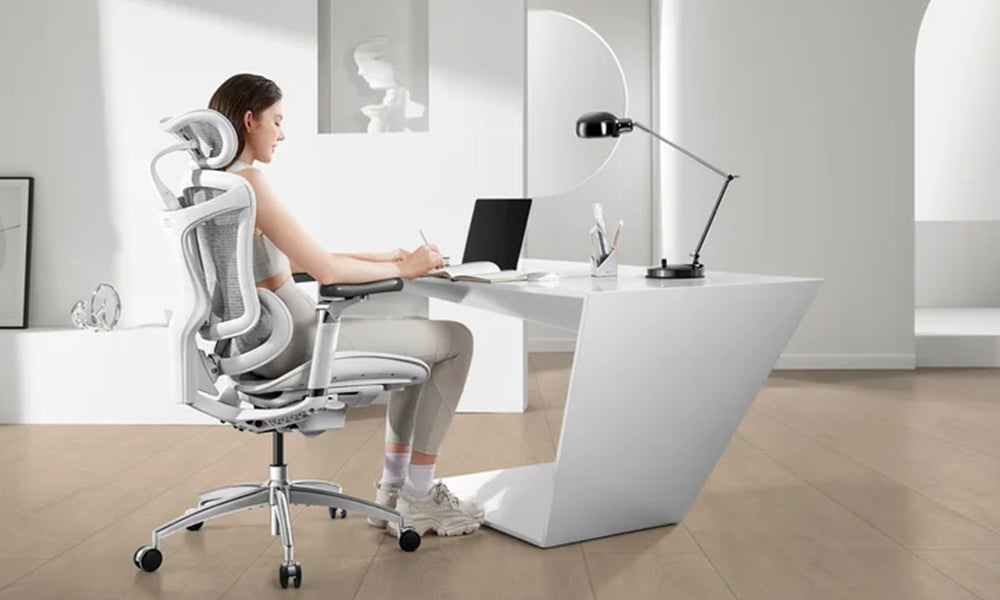Office chairs are essential tools for productivity and comfort in the workplace. However, over time, these chairs may develop issues, one of the most common being a sinking seat. If you've ever found yourself gradually sinking lower and lower in your office chair, you know how frustrating and uncomfortable it can be. The good news is that fixing a sinking office chair is a relatively simple task that can save you money and extend the life of your chair.
In this comprehensive guide, we will walk you through the step-by-step process of diagnosing and repairing a sinking office chair. Whether you are a DIY enthusiast or a novice, you can follow these instructions to get your office chair back in top form.
Understanding Why Office Chairs Sink
Before diving into the solutions, it's essential to understand why office chairs sink in the first place. Office chairs are equipped with a pneumatic gas cylinder that controls the chair's height adjustment. Over time, this cylinder can wear out or develop leaks, leading to a gradual loss of pressure and the sinking sensation when you sit on the chair.
Several factors can contribute to this issue:
Age: As office chairs age, their gas cylinders may deteriorate, causing them to lose pressure and sink.
Low-Quality Components: Chairs with lower-quality gas cylinders are more prone to this problem.
Overloading: Regularly exceeding the chair's weight limit can put extra strain on the gas cylinder, leading to quicker wear and tear.
Frequent Adjustments: Constantly adjusting the chair's height can accelerate wear and tear on the gas cylinder.
Now that you understand why office chairs sink let's explore the steps to fix this issue.
Tools and Materials You'll Need
Before you start repairing your sinking office chair, gather the necessary tools and materials. Having everything ready will make the process smoother and more efficient. Here's a list of what you'll need:
Replacement Gas Cylinder: You'll need a new gas cylinder to replace the old one. Make sure to purchase a cylinder that is compatible with your chair model. You can usually find this information in your chair's user manual or by contacting the manufacturer.
Wrenches: You'll need an adjustable wrench and a pipe wrench to remove and install the gas cylinder.
Rubber Mallet: A rubber mallet can be handy for tapping and loosening stubborn parts.
Protective Gloves: To protect your hands from dirt and sharp edges.
Safety Glasses: Safety glasses are essential when working with tools to prevent any eye injuries.
Clean Cloth: A clean cloth or rag will help you wipe off any dirt or grease during the process.
Now that you have your tools and materials ready, let's move on to the step-by-step process of fixing your sinking office chair.
Step 1: Safety First
Before you start any repair work, it's crucial to prioritize safety. Make sure you are working in a well-lit and well-ventilated area. Additionally, wear your safety glasses and protective gloves throughout the process to prevent any injuries.
Step 2: Remove the Old Gas Cylinder
Inspect the Chair: Begin by turning your office chair upside down on a clean and flat surface. Examine the chair's base and locate the gas cylinder. It's typically attached to the chair's seat and base.
Release Pressure: To remove the old gas cylinder safely, you must release any remaining pressure. To do this, gently press down on the chair's seat while it's upside down. This will expel any remaining gas.
Use a Pipe Wrench: Next, use a pipe wrench to grip the top part of the gas cylinder where it connects to the seat mechanism. Turn the wrench counterclockwise to loosen and remove the old cylinder. This might require some force, so be patient.
Remove the Cylinder: Once the gas cylinder is loose, you can easily pull it out of the chair's base.
Step 3: Prepare the New Gas Cylinder
Inspect the New Cylinder: Before installing the new gas cylinder, inspect it for any defects or damage. Make sure it matches the specifications of your old cylinder.
Apply Lubricant: To ensure smooth operation, you can apply a small amount of lubricant to the top of the new gas cylinder.
Step 4: Install the New Gas Cylinder
Align the Cylinder: Carefully align the new gas cylinder with the hole in the chair's base. Ensure that it fits snugly and securely.
Use the Adjustable Wrench: Use an adjustable wrench to tighten the cylinder by turning it clockwise. Be sure to tighten it firmly to prevent any future sinking issues.
Test the Chair: Flip the chair back over and test the chair's height adjustment to confirm that it is working correctly. You should be able to adjust the chair's height smoothly without any sinking.
Step 5: Clean and Maintain
Now that your office chair is no longer sinking, take the opportunity to clean and maintain it for long-lasting performance.
Clean the Chair: Wipe down the chair's seat, backrest, and armrests with a clean cloth to remove any dirt or dust.
Inspect Other Components: While you're at it, inspect other components of the chair, such as the casters and armrests, for any signs of wear or damage. Replace any worn-out parts to ensure your chair's overall functionality.
Regular Maintenance: To prevent future sinking issues, perform regular maintenance on your office chair. This includes keeping it clean, lubricating moving parts, and avoiding overloading it.
Step 6: Dispose of the Old Cylinder Responsibly
Now that you've successfully replaced the gas cylinder, it's important to dispose of the old one responsibly. Gas cylinders contain compressed gas and are considered hazardous waste. Do not throw them in the regular trash.
Contact your local recycling center or hazardous waste disposal facility to find out the proper way to dispose of the old cylinder in accordance with your area's regulations.
Conclusion
Fixing a sinking office chair is a manageable DIY project that can save you money and extend the life of your chair. By following the step-by-step guide outlined in this article and investing in a high-quality replacement gas cylinder, you can enjoy a comfortable and functional office chair once again.
Remember that safety is paramount during this process, so always wear protective gear and work in a well-ventilated area. With the right tools and a little patience, you can quickly restore your sinking office chair to its former glory.
So, the next time you find yourself gradually sinking in your chair, don't fret. Armed with this guide, you have the knowledge and skills to fix the issue and continue working comfortably in your office space. Happy repairing!



